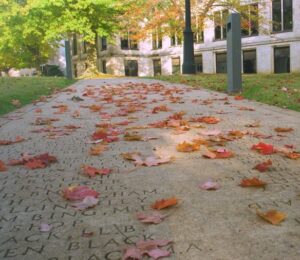IMAGE: Professor Jim Al-Khalili, University of Surrey
see more
Credit: University of Surrey
The University of Surrey has received its largest philanthropic grant to date, funded by the John Templeton Foundation and worth US $ 3 million (£ 2.1 million), to lead a major new research project. The project will focus on the fundamental nature of time and its potential to reveal scientific and philosophical insights into the quantum world, the implications of which for life itself are being explored in the new field of quantum biology.
The project, "Life on the Edge: Quantum Thermodynamics, Quantum Biology and the Arrow of Time" will be led by Professor Jim Al-Khalili and Dr. Andrea Rocco from the University of Surrey. Professor Al-Khalili was recently awarded a CBE on the Queen's Birthday Honors List for outstanding services to science and public participation in science, technology, engineering and mathematics. He is Professor of Theoretical Physics and Distinguished Professor of Physics at the University of Surrey, as well as University Professor of Public Participation in Science and a prominent author and broadcaster. Dr Andrea Rocco, a theoretical physicist with extensive experience in nonlinear dynamics and statistical mechanics, is Senior Lecturer in Mathematical Physics and Biology at the University of Surrey.
The work will be completed in collaboration with colleagues from Arizona State University, the University of Bristol, the University of California, Los Angeles (UCLA), the University of California at San Diego (UC San Diego), and the University of Oxford.
Researchers from the UK and the US will explore the complex interrelationship between the nature of time and the different ways that the passage of time and quantum physics manifest in inanimate objects compared to living organisms, with possible implications for understanding of life itself. . The project brings together the disciplines of quantum physics, applied mathematics, computational chemistry, experimental molecular biology and the philosophy of science.
The project aims to not only revolutionize the ideas of fundamental science, but also to influence a wider audience and inspire the next generation of scientists through a series of events. There will be a series of meetings that will attract international scientists to the "Blue-Sky Thinking" workshops, a program for schools and non-specialized public, and online content.
The John Templeton Foundation serves as a philanthropic catalyst for discoveries related to the deepest and most perplexing issues facing humanity. The Foundation focuses its support on recipients who push the boundaries of understanding in a variety of subjects in science, philosophy, and theology.
Three of the 'Big Questions' that have informed Sir John Templeton's vision, and that continue to puzzle scientists and philosophers today, are: What is the nature of Reality? What is the nature of time? What is the nature of life? The key idea that will drive the 'Life on the Edge' project is how these deep questions are not independent, but are different aspects of the same question: How does the arrow of time manifest itself in different systems and on different scales?
Professor Jim Al-Khalili of the University of Surrey said: "One of the most profound aspects of existence is the distinction between past and future, the so-called arrow of time. This self-evident 'asymmetry' of time life itself is a defining characteristic of life: we are born, grow old and die. Time never passes for us, even if we sometimes wish we could turn back. With this generous gift, our researchers will be able to study the quantum processes that underpin the machinery of life We hope to get closer to an answer on how and why life is so special: is it the way that living matter is able to use the temporal symmetry of the quantum domain that distinguishes it? e from inanimate matter? "
Aamir Ali, Program Officer for Mathematics and Physical Sciences at the John Templeton Foundation, said:" The hypothesis that biological systems may have evolved to take advantage of quantum processes, and could serve as a new laboratory for fundamental physics, it is the A kind of 'big question' thinking that aligns perfectly with the Foundation's vision for our Mathematics and Physical Sciences program. Jim and Andrea have put together an excellent team and have come up with not only an impressive research program, but also extensive public outreach activities. Communicating about scientific discoveries and the scientific process to the general public is essential. We couldn't be more excited to see the results of this grant fully materialize. "
###
For more information, contact Simmie Korotane, Press Officer, s .korotane @ surrey.ac.uk
For other University of Surrey stories, see here
Notes to editors:
About the University of Surrey
The University of Surrey – a global community of ideas and people, dedicated to life-changing education and research The University of Surrey is a research intensive university committed to excellence in teaching and research with a focus on practice-based education programs, providing a world-class experience to its students who continue to make positive contributions to society. Is committed to working in partnership with student s, business, government and communities in the discovery and application of knowledge.
About the John Templeton Foundation
Founded in 1987, the John Templeton Foundation supports research and dialogue on issues deepest and most perplexing facing humanity. The Foundation's funds work on topics ranging from black holes and evolution to creativity, forgiveness and free will. It also encourages civil and informed dialogue between scientists, philosophers, theologians, and the general public.
With an endowment of $ 3.8 billion and an annual gift of approximately $ 140 million, the Foundation is among the 25 largest grant-making foundations in the United States. Headquartered outside of Philadelphia, its philanthropic activities have involved major religious traditions and have spread to more than 190 countries around the world.




Be First to Comment